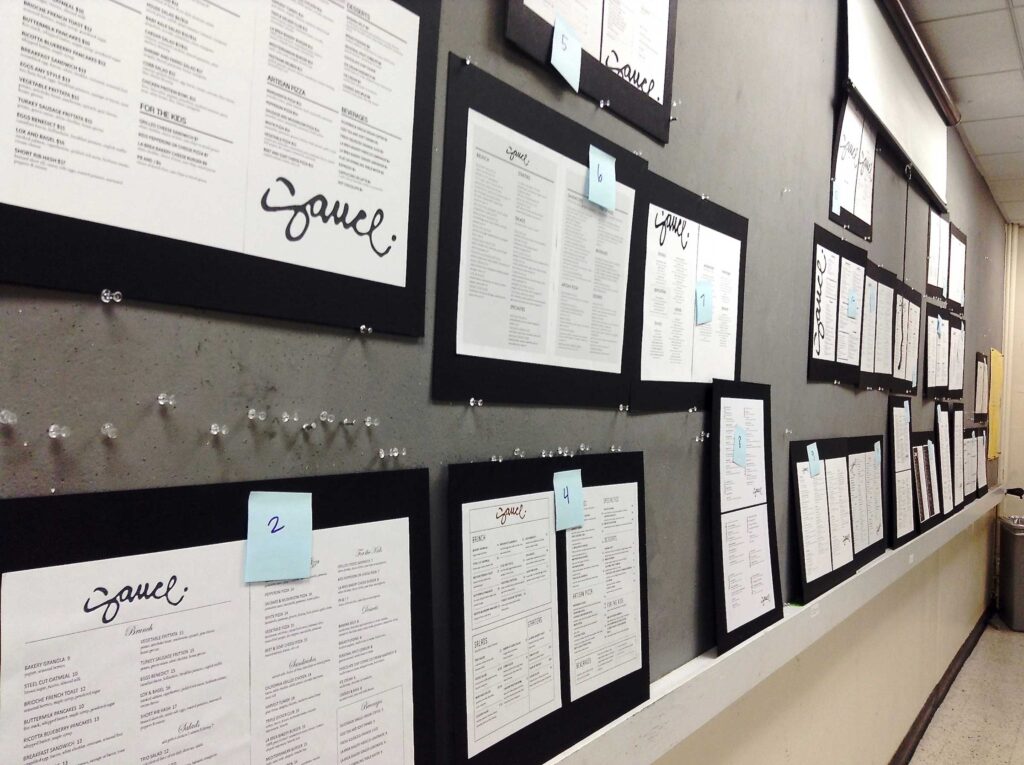In college, design schooling outlines the basic requirements for career preparedness, and instructors try to give as much real-world training as they can in such a short amount of time. Not everything you need to know in preparation for your design career can be taught in four years, and instructors know that not every concept can be realized or practiced.
We asked design educators from some of the top design programs in the nation to share the number one fundamental area of typography that their students have a hard time grasping. Think of these answers as recommendations on typography areas to brush up on to help excel past your peers.
Mindset of the Craft
“Type learners only get into technical (historical, analog, digital) and aesthetic detail when they see how they need to be invested in the craft as part of learning and eventually working as typographers, in addition to being visual artists; not illustrators, Photoshoppers, game designers or other fields or technology they might first be exposed to as young artists and designers in high school, community college, or foundation classes.”
— Joseph Coates, Lecturer at Maryland Institute College of Art (MICA)
“Negative space and relatedly, scale.”
— Margaret Urban, Associate Professor of Graphic Design at the State University of New York at Fredonia
“The proportion of type size to page and everything in between: margins to column widths to type size to leading. They keep looking at the type itself, not at the type and how it’s connected to the page holistically. Everything’s connected proportionally.”
— Michael Stinson, Adjunct Faculty at Laguna College of Art + Design (LCAD)
Personality
“That type has a specific voice that comes along with it. I try to get my students to actually find photos of people that match type.”
— Andrew Hochradel, Design & Photography Educator, California Baptist University, Riverside
“Choosing an appropriate typeface for a project.”
—Victoria Pickett, Lecturer of Visual Communication, Northern Arizona University
Don’t Leave It to the Software
“I think most students fail to understand that they do not have to use the default settings that come in a font. Type is scalable and the type designer optimized the internal metrics of a font for a particular size. Once a student starts changing the size and setting, adjustments to the letter space and word space must be made, and that is where they generally go wrong. I would also add that I think there is too much emphasis on ‘experimental’ or ‘conceptual’ typography in design schools. Most students cannot set a proper paragraph justified, rag right, rag left or centered. And most still cannot find the correct quote marks. But it shouldn’t surprise me, most working designers cannot do it either.”
– James Montalbano, Assistant Professor at Parsons School of Design
“That perception trumps mathematics. It’s developing a typographic sensitivity to know when to break the mathematical system in order to perceptually adhere to it. Like how an ‘O’ overhangs the baseline so it isn’t perceived as floating.”
— Ben Hannam, Associate Professor at Elon University
“All type needs to be adjusted once typed. Auto leading and kerning is not acceptable. Also stretching type and not “knowing” about the fonts they choose. For example, I say, “why did you choose Impact as the type for this project?” and they say ‘how did you know I used Impact?’ and ‘I don’t know, I like it.’”
— George Garrastegui Jr., Design Educator at New York City College of Technology
Final Details
“Have you ever had a client say they gave proofed copy to a designer and it came back with formatting errors? Students are not catching the basics. I tell my design students they should be known for caring about accuracy and quality. They don’t understand that typography is about communication and when they don’t run spell checks or understand the basics of grammar, they are doing themselves and their clients a disservice.”
— Rachelle Woo Chuang, Graphic Design Educator, Chapman University, Orange
“Restraint.”
— Nikki Juen, Design Faculty at Rhode Island School of Design and Vermont College of Fine Arts
Are you an educator who feels your students could improve their typography in a certain area? Let us know what they have a hard time grasping by tweeting at @TypeEd.
Rachel Elnar is the producer and co-founder at TypeEd, where she helps bring the craft of typography back to design education. Get more type in your inbox and sign up for more about TypeEd columns (and other announcements).




